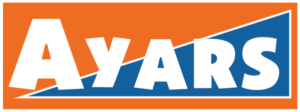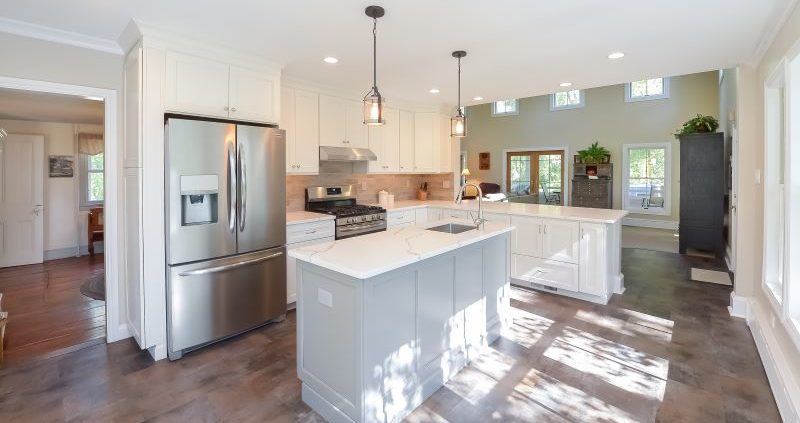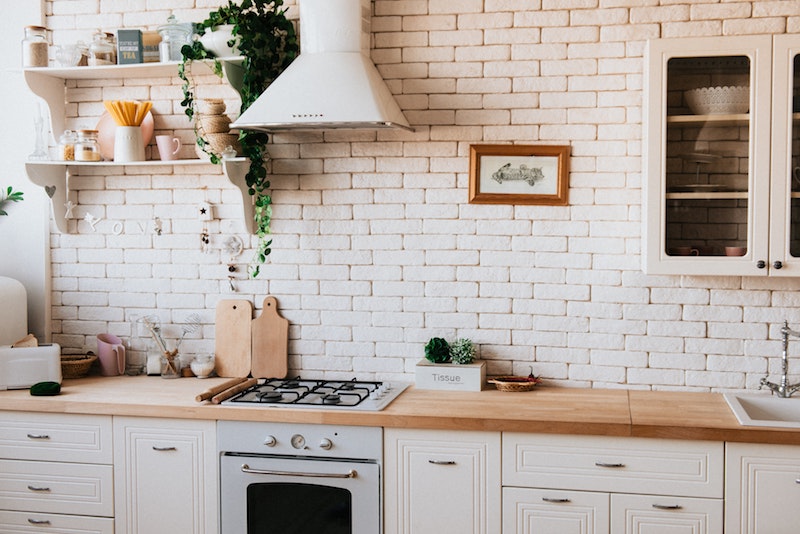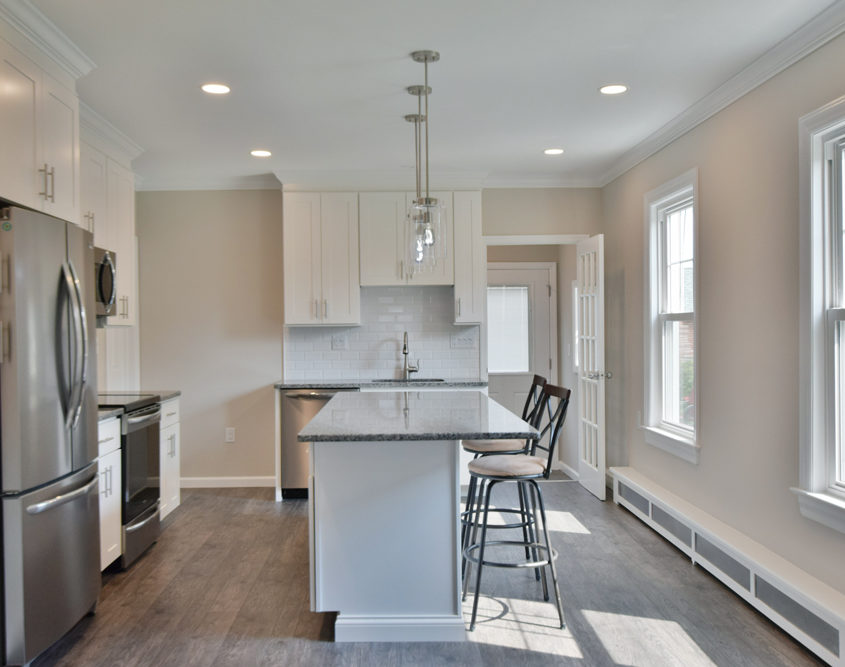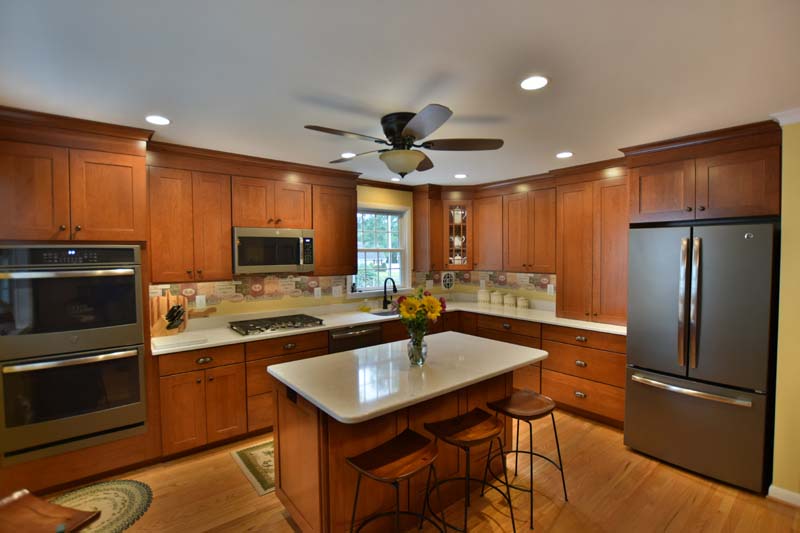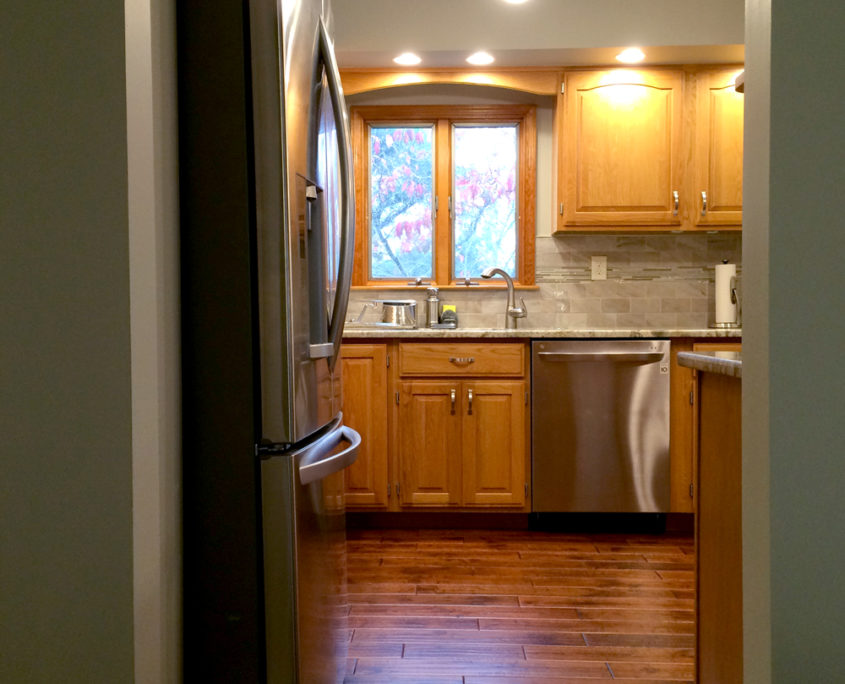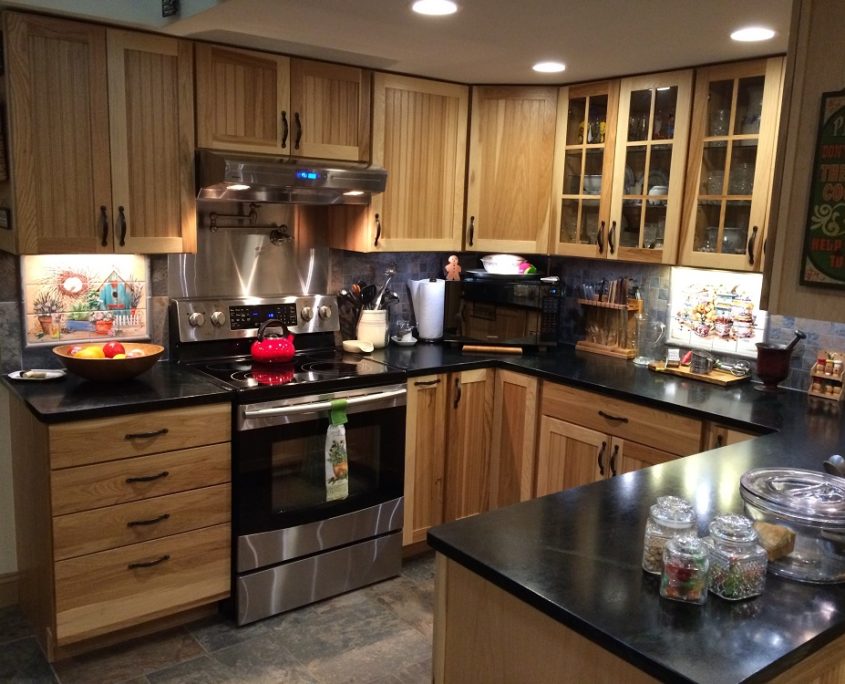Kitchen Layout Designs: Possibilities and Limitations
If you were to poll people about what they love (or hate) most about their kitchens, it would almost certainly come down to their kitchen layout design. No matter how easy on the eyes a kitchen is, if it is difficult to navigate and use, you might as well have thrown your remodeling budget down the garbage disposal. The kitchen is the heartbeat of the home, pulsing with the life of family and friends, meals and memories. Do not bypass the fundamentals.
What your kitchen layout needs to accomplish
The key to a successful kitchen layout design is an uninterrupted work triangle. The work triangle is the path between the refrigerator, stove, and sink — or where food is stored, prepared, and washed away. These work areas should not be too far away from one another, nor should there be any obstacles in between. It should allow for appliances, tools, and utensils to be stored or placed within easy reach and, if no dining room is present, residents or guests to be seated comfortably.
Recapping the kitchen shapes
Kitchen layout types are classified into five basic shapes, often influenced by the amount of space available or the overall floor plan design. As much as we’d like to have every option at fingertips, sometimes a certain layout just will not be compatible with your home. In that case, it’s a matter of making the most of what you have (or building an addition to give you what you don’t).
Single wall kitchen
What it is: Everything — cabinets, appliances, and workstations — along a single wall, effectively flattening the work triangle into a straight line.
Who it’s for: People for whom space is at an absolute premium, such as those who live in a small apartment or condo.
Pros: Conservation of space elsewhere — the kitchen in this instance is part of a multifunctional room.
Cons: Finding a place to put everything — smart storage solutions and organizational efficiency are a must.
Will it island?: Yes, and in fact it’s becoming rarer to find single wall kitchens without one. Adding a kitchen island parallel to the wall creates a more open version of our next major kitchen shape, the galley.
Galley kitchen
What it is: Counters, cabinets, and appliances arranged parallel along two facing walls, creating a corridor in which the cook can work.
Who it’s for: Seafarers, or those who’d prefer to use their kitchen for cooking.
Pros: Efficiency, efficiency, efficiency — there’s a reason this is the preferred kitchen layout design of many professional chefs. Moving from task to task is as easy as taking a few steps to the side and/or spinning around. And of course, two full walls for storage is better than one.
Cons: Depending on the width of the corridor, galleys can feel a bit claustrophobic. Also if they are closed off by a wall at either end, they’re not ideal for socializing while you’re at work.
Will it island?: Sort of. In a traditional galley with two full walls, a kitchen island would very much be in the way. However, islands can be used to create a galley-like workflow in a more open environment — by either knocking out a wall, or by installing two islands parallel to one another.
L-shaped kitchen
What it is: In the L-shaped kitchen, two runs of countertop meet perpendicularly in a corner.
Who it’s for: Nearly anyone! The L-shaped kitchen is perhaps the world’s most popular because of its versatility and natural compatibility with open-concept designs.
Pros: Great for teamwork, as two chefs can work together at their own stretch of counter simultaneously without bumping into one another. Also excellent for entertaining and socializing as the dining area — or family or living room in open concepts — is often opposite the working area.
Cons: Susceptible to wasted space or disruptions in workflow, especially in the corners — plan ahead when slotting in your major appliances.
Will it island?: Absolutely — so long as the room is big enough. Just make sure you don’t accidentally disrupt the work triangle if you’re allocating one or more workstations to the kitchen island.
U-shaped kitchen
What it is: Also called a horseshoe kitchen, the U-shape surrounds the chef with work space and storage on three sides with another end open (typically to a separate dining room).
Who it’s for: Home cooks with a lot of dishware and/or gadgets, as there can be plenty of cabinetry and shelving to accommodate all of them.
Pros: The horseshoe kitchen is another fine choice for the serious chef, as it tends to be used predominantly for cooking and provides ample storage.
Cons: Can create a potential safety hazard if there is a traffic trying to pass through — such as with an entry door. The temptation to overload with wall cabinets can result in a bland and boxy aesthetic. Save a wall or two for open shelving, focal tile, or another form of visual interest.
Will it island?: Yes, if your horseshoe is adequately sized, a kitchen island could function terrifically. In fact, by adding an island you could potentially create two or even three work triangles for the ultimate mealtime tag team effort.
G-shaped kitchen
What it is: The G-shaped kitchen is also sometimes referred to as a peninsula kitchen for its defining detail, a partial wall jutting out from the corner on one of its four sides, resulting in a sort of sit-down bar.
Who it’s for: People who want an island but do not have the space for one.
Pros: Enjoy the utility of a U-shaped kitchen while adding some of the entertaining potential of an L-shaped kitchen.
Cons: Prepare for traffic jams in the narrow entryway formed at the end of the peninsula.
Will it island?: No, the appeal of the G-shaped kitchen is in its hybrid quality — it’s a sort of compromise, but often a very compelling one!
What kitchen type is best for me?
By now, you should have a fairly good idea of what kitchen layout design is best suited for your home. But how to execute it to its fullest potential? Leave that to the kitchen professionals at Ayars Complete Home Improvements. We take great pride in the process of crafting quality cooking, dining, and entertaining spaces from beginning to end. Wherever you’re at in your relationship with your kitchen, it’s time to either start loving it or start loving it a little more.
